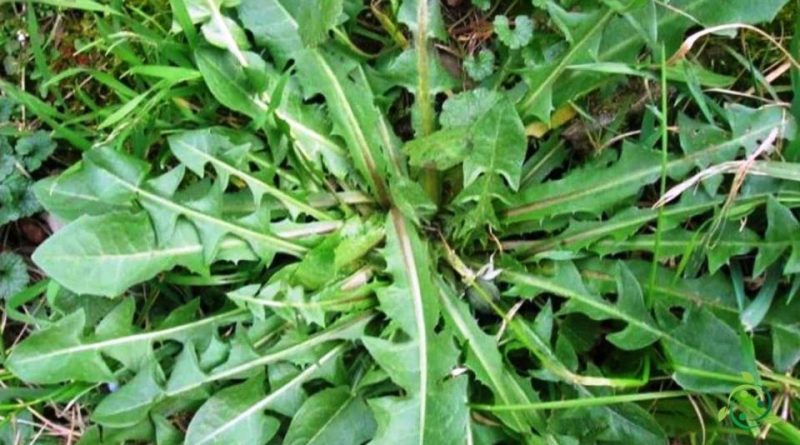Nutritional value of chicory
Nutritional value of chicory
Common chicory (Cichorium intybus L., 1753) is a herbaceous perennial plant of the Asteraceae family.
Features –
Chicory is a biennial or perennial herbaceous plant, with a tap root, cylindrical or conical, long and branched, when cut it spreads a white latex with a bitter taste; stems erect, branchy for stiff and spread branches, hollow angular bristly for hairs turned downwards. Height 20 ÷ 150 cm.
Its leaves united in a basal rosette are irregularly pinnate-matched petioles with acute triangular segments, the primordial ones can also be not toothed, undivided. Hairy, in dry places, hairless in grassy places, dark green in color, often suffused with red, especially on the rib. The cauline leaves are alternate and sessile, the lower lobed are hairy above, the upper oblong and lanceolate quite sheathing.
The inflorescences have an envelope arranged in 2 rows. The bracts of the involucre are ciliate, the external ones are short and oval, the internal ones oblong, lanceolate and straight.
The flowers are all ligulate, with 5-toothed tongues, are gathered in 2 ÷ 3 elements flower heads carried by short peduncles, are of an intense blue color, more rarely white or pink. The inflorescences close in the afternoon and in bad weather.
The fruits are sand-colored achenes with five bristly sides on the edge, surmounted by pappus with very short straws. Long baby food 1 / 10-1 / 8 of the achenium
This plant has given rise to many horticultural varieties (generally anthocyanin cultivars, with colored leaves) of which, below, some are listed:
– Red Radicchio of Treviso;
– Variegated Radicchio di Castelfranco;
– Rose of Chioggia or variegated Chicory of Chioggia;
– Catalonia (chicory) or Chicory asparagus;
– Chicory from Brindisi;
– Water chicory;
– Brussels chicory or Brussels chicory or Witloof chicory;
– ‘Capuchin beard’ chicory;
– Biondissima from Trieste;
– Ceriol;
– Rose of Gorizia;
– Etc.
Nutritional factsheet –
Chicory is a plant that contains various active ingredients. The roots contain bitter substances, sugars (it contains three types of sugar: dextrose, levulose and Pentosipentose), chicory, choline, inulin, potassium, calcium and iron, dicaffeyltartaric acid (and other derivatives of caffeic acid), tannins, starch, salts minerals and vitamins.
Furthermore, 100 g of chicory contain 10 kcal / 42 kj and for every 100 g of this product we have, on average, and with variations according to the cultivars and cultivation systems, the following values:
– Water 93.4 g;
– Carbohydrates 0.7 g;
– Sugars 0.7 g;
– Protein 1.4 g;
– Fat 0.2 g;
– Cholesterol 0 g;
– Total fiber 3.6 mg;
– Iron 0.7 mg;
– Calcium 74 mg;
– Phosphorus 31 mg;
– Vitamin B1 0.03;
– Vitamin B2 0.19;
– Vitamin B3 0.3;
– Vitamin A 219 µg;
– Vitamin C 17 mg.
Property –
Chicory is a vegetable that stimulates concentration, helps fight drowsiness, has laxative power, stimulates the activity of the pancreas and liver. Thanks to its properties it helps regulate the amount of glucose and cholesterol in the blood; it is therefore a particularly valuable food for those suffering from diabetes or high cholesterol.
The substances present in chicory are very useful to the body, thanks to which this vegetable boasts astringent, tonic, disinfectant and detoxifying properties. Chicory also promotes the functioning of the gallbladder and kidneys and stimulates digestion. Wraps made with chicory decoction help soothe skin irritations. Finally, chicory is considered a real cure-all for acne.
In general, chicory stimulates the functions, through purification and detoxification, of the intestine, liver and kidneys thanks to its digestive, hypoglycemic, laxative, cholagogue (facilitates the secretion of bile towards the intestine), and is cardiotonic (regulates the frequency cardiac). Liquids can be extracted from the flowers which are useful for treating some types of ophthalmias. The pulp of the root can be useful for some inflammations (anti-inflammatory properties).
For medicinal purposes the root is harvested throughout the summer and the leaves before flowering.
Generally, decoctions are used or syrups are formed; from the appropriately macerated leaves you can obtain a refreshing cream for the face (it fights redness).
However, it should be remembered that, according to some sources, that prolonged use of chicory roots as a coffee substitute could reduce the functionality of the retina, even if modern scientific literature contains little or no evidence to support or refute such a hypothesis.

